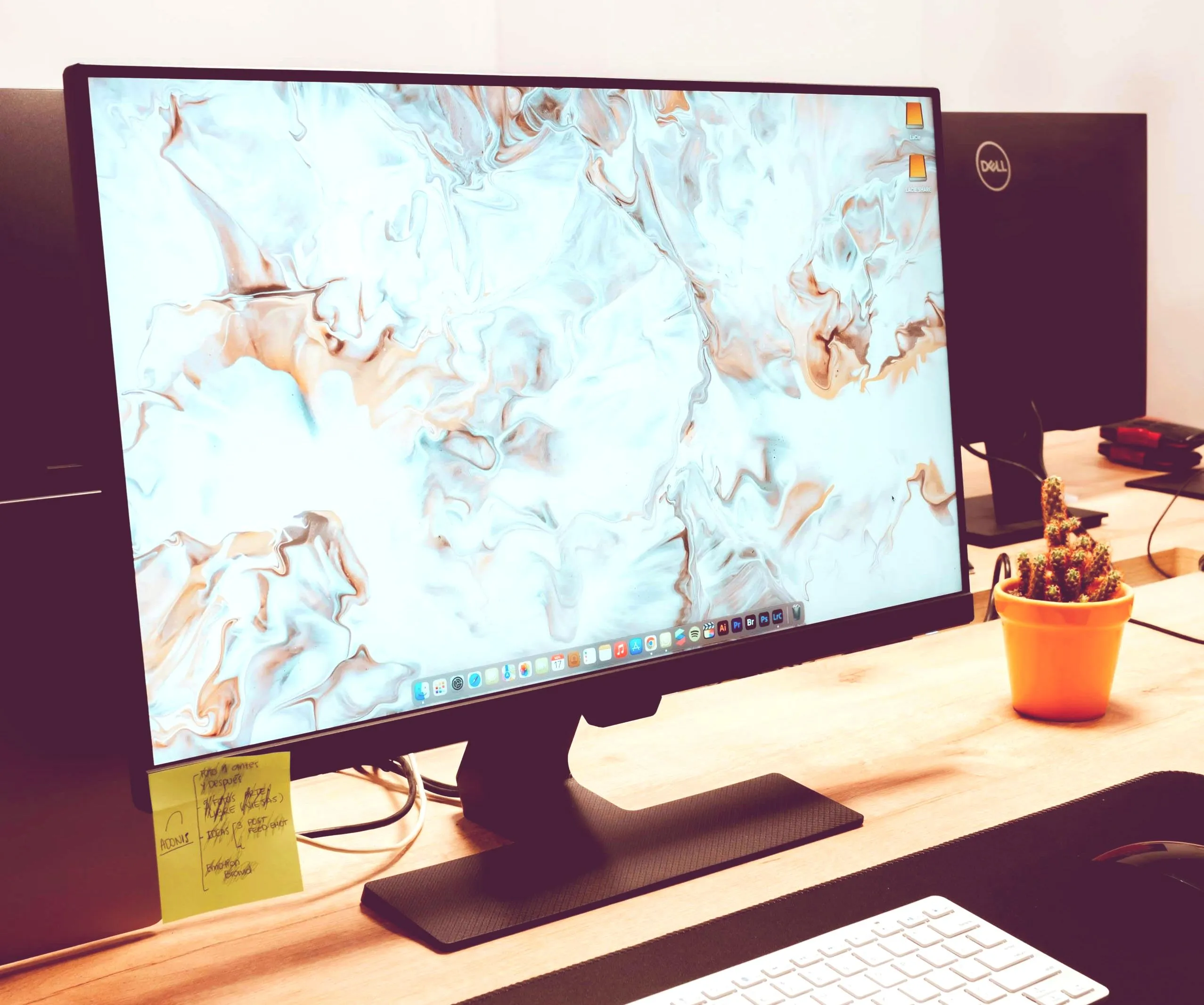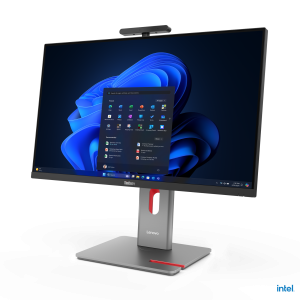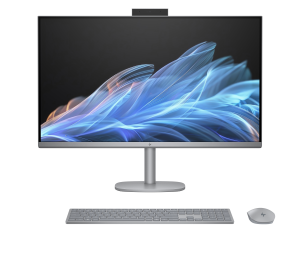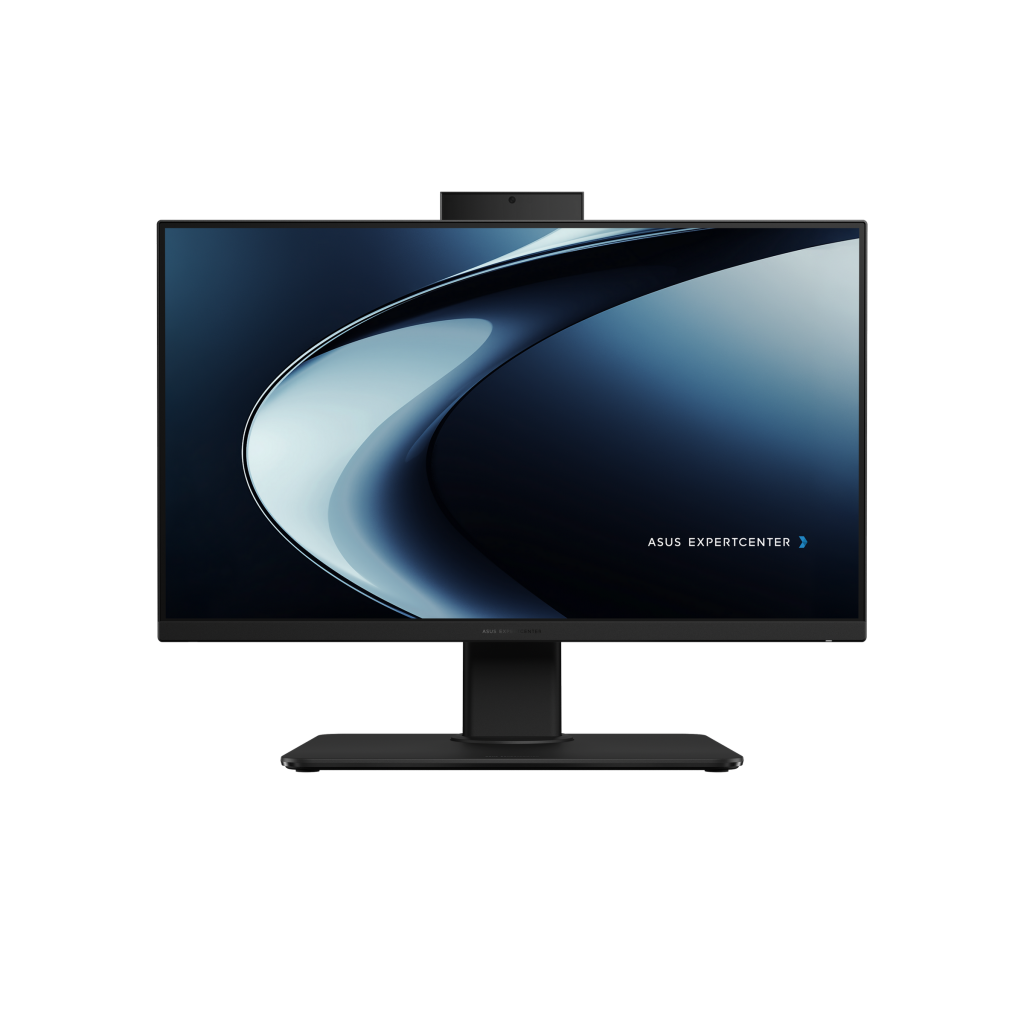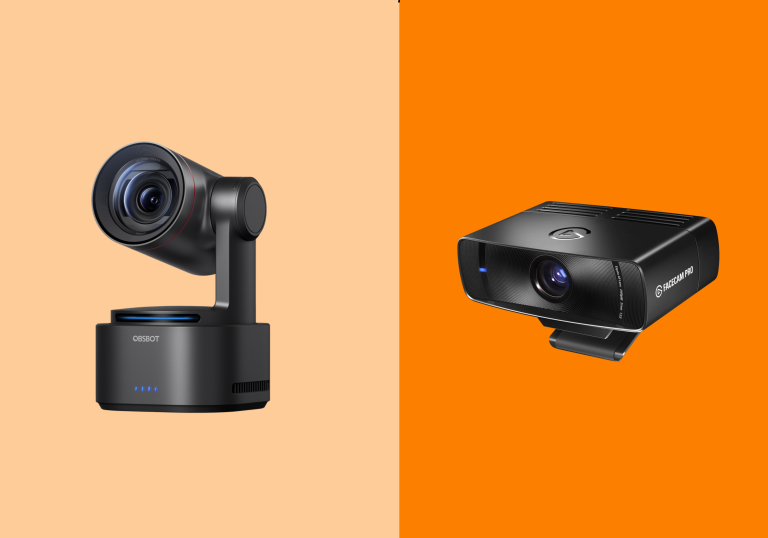There was a time when buying an all-in-one PC meant accepting compromise. You got a tidy, space-saving design, sure — but also slower components, limited ports, and almost no room for upgrades. For years, these machines were treated like entry-level tools: fine for checking email, not much else. But that era’s over. Today’s best all-in-one PCs are nothing like the stripped-down systems of the past. They’re sleek, powerful, and surprisingly versatile — full-fledged desktops disguised as minimalist setups.
Modern AIOs now come equipped with high-performance internals that rival many mid-range towers: multi-core processors from Intel or AMD, fast SSD storage, generous RAM capacities, and even discrete graphics in some models. And because the display is built in, you’re getting a screen that’s often sharper, brighter, and better calibrated than most standalone monitors — especially in higher-end models geared toward creative professionals or remote workers who rely on color accuracy and clarity.
But performance isn’t the only upgrade. Design has caught up too. From ultra-thin bezels to integrated webcams with privacy shutters to clever cable management systems, today’s AIOs are built with modern users in mind — those who care about performance and aesthetics. Whether you’re outfitting a compact home office, upgrading the family workspace, or just tired of wrestling with a spaghetti bowl of cords, these all-in-one machines offer a clean, capable solution that feels like the future of desktop computing.
In this guide, we’ve curated the best all-in-one PCs available right now — machines that don’t just meet today’s demands but anticipate tomorrow’s. Whether you’re working, editing, designing, or just want your tech to look as sharp as it runs, these are the systems that prove you don’t need a tower to get serious work done.
Best All-in-One PC: Top Picks Chosen with Care
Best Budget-friendly All-in-One Pc
Acer Aspire C24 AiO PC
explore details
or
Best Business-Grade AIO
Dell OptiPlex All-in-One Plus
explore details
or
Best Premium AIO
Apple iMac M3 (2023)
explore details
or
In-Depth Look: Top Picks Chosen with Care
We research each product thoroughly before featuring it — using trusted reviews and expert sources, not direct testing. Some links may earn us a commission, helping keep the site free for readers
Related Posts
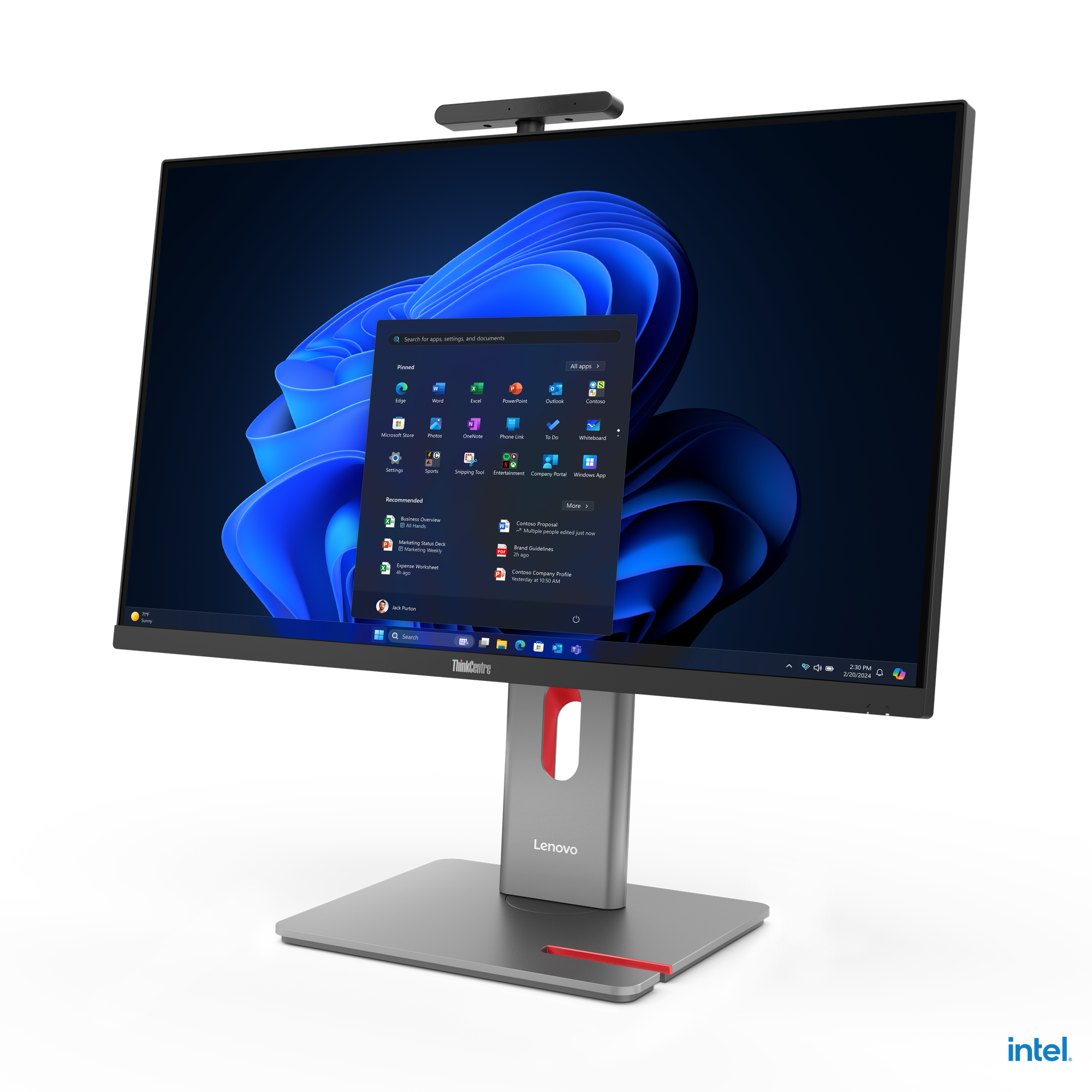
Best AIO for Power Users
Lenovo ThinkCentre M90a Pro
| CPU | Up to Intel Core i9-13900 (13th Gen) |
| Graphics | Integrated Intel UHD or optional NVIDIA GeForce RTX 3050 |
| Display | 23.8″ or 27″ QHD (2560 x 1440) Anti-glare IPS, 350 nits |
| RAM | Up to 64GB DDR5 |
| Storage | Up to 1TB SSD + Optional 2TB HDD |
| Webcam | 5MP camera with privacy shutter and noise-cancelling mics |
| Ports | USB-C, USB-A, HDMI, DisplayPort, Ethernet, SD card |
| Connectivity | Wi-Fi 6E, Bluetooth 5.2 |
| Operating System | Windows 11 Pro or Home |
| Security Features | TPM 2.0, Smart Cable Clip, BIOS-level protection |
| Dimensions & Weight | Around 24.5″ x 20.4″ x 8.5″, ~18–20 lbs depending on config |
The ThinkCentre M90a Pro stands out as a business-grade all-in-one that doesn’t compromise on performance or manageability. Powered by up to Intel Core i9 processors and configured with enterprise-grade security features, it’s clearly engineered for users who need a stable, secure, and high-performing system for professional workloads. The 23.8-inch QHD display delivers sharp visuals with excellent color clarity, while its integrated cable management and tool-less chassis make it easy to maintain in IT-heavy environments. With support for Intel vPro, a privacy-focused 5MP camera, and a wide array of I/O—including DisplayPort, HDMI, and Thunderbolt 4—it’s optimized for hybrid offices and enterprise deployment. It earns its place here by offering a rare mix of commercial durability and high-end specs in an all-in-one form.
| Pros | Cons |
|---|---|
| Sleek all-in-one design saves desk space | Limited upgrade potential vs. full towers |
| Powerful CPU and RAM options | Premium configurations get pricey |
| Sharp QHD display with good brightness | |
| Excellent built-in webcam and mic setup | |
| Great port selection, including USB-C |
This system is best suited for professionals in finance, administration, or IT-managed environments who need secure hardware with reliable, sustained performance. If you’re working with large spreadsheets, browser-heavy research workflows, remote desktop access, or daily video conferencing, the M90a Pro handles it all without hiccups. Its support for Intel vPro and TPM 2.0 makes it a solid choice for organizations with strict security protocols. And for users who need a compact workstation that still offers enterprise-level expansion—like dual monitor output or fast storage access—it ticks all the boxes. Whether it’s deployed in a boardroom or on a remote professional’s desk, it’s built to meet the demands of modern productivity with minimal downtime.
get it now
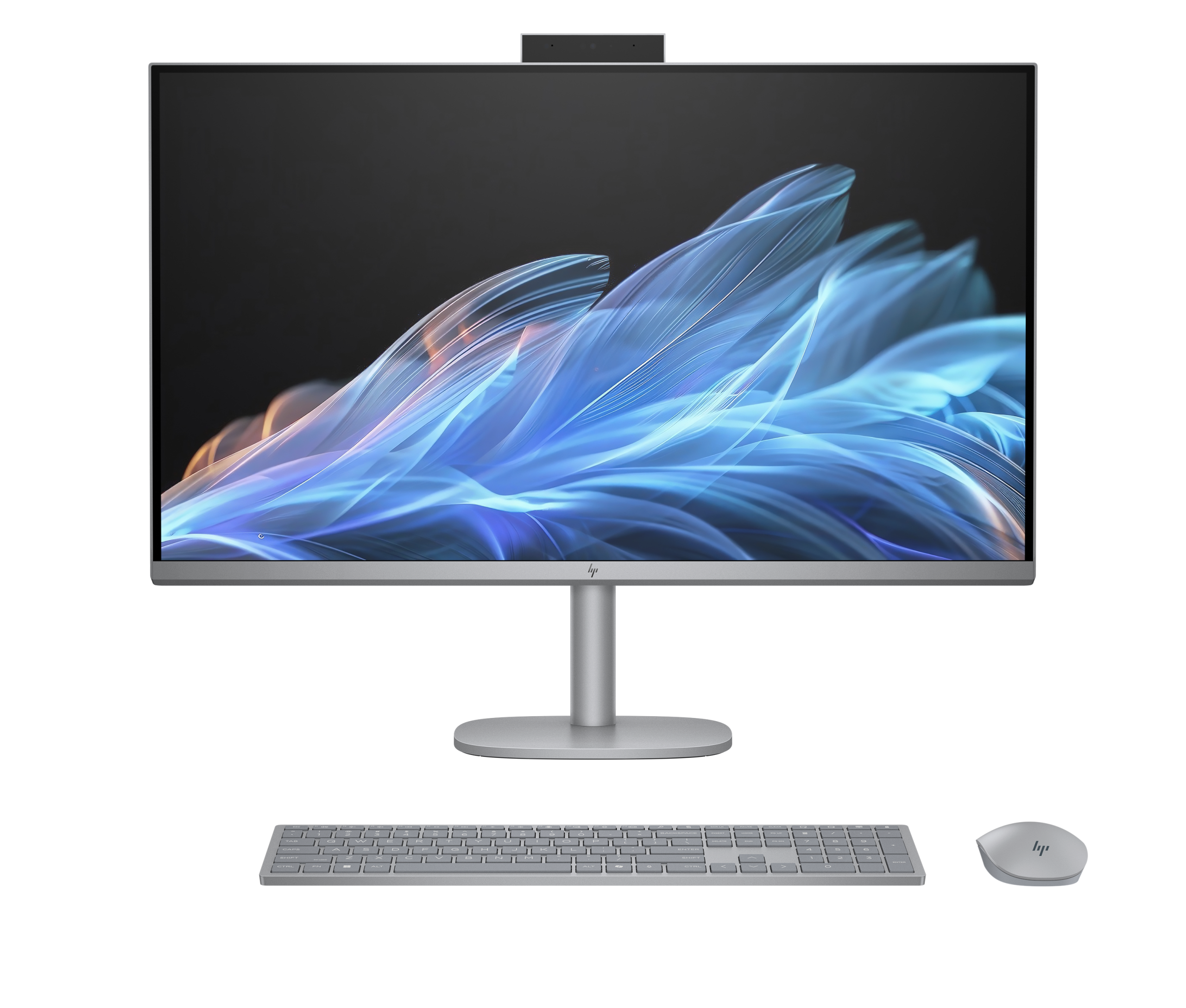
Best Reliable AIO for Work and Study
Best AIO Laptop for Creative College Students
| CPU | Up to Intel Core i9-13900 or AMD Ryzen 9 |
| Graphics | Integrated Intel Graphics or optional NVIDIA RTX 4060 |
| Display | 31.5” 4K UHD (3840 x 2160) IPS, touch-enabled, 60–120Hz |
| RAM | Up to 64GB DDR5 |
| Storage | Up to 2TB SSD |
| Webcam | 5MP IR camera with Windows Hello, privacy shutter |
| Ports | USB-C, USB-A, HDMI-in/out, SD card reader, Ethernet |
| Connectivity | Wi-Fi 6E, Bluetooth 5.3 |
| Audio | Bang & Olufsen tuned speakers |
| Operating System | Windows 11 Home or Pro |
| Build Features | Height/tilt adjustable display, minimalist chassis |
What pushed the HP OmniStudio X onto this list is its specs-to-design ratio—it’s built for creators and high-demand users who need workstation-class performance without building a full tower setup. Under the hood, you’re looking at up to a 13th Gen Intel Core i9 or AMD Ryzen 9 paired with up to an RTX 4060, which means it can comfortably handle everything from 4K video timelines to real-time rendering tasks. The 31.5-inch 4K display is both sharp and color-accurate, making it a reliable panel for content creation. And because the system is neatly integrated with a clean I/O layout, solid thermals, and premium touches like Bang & Olufsen speakers, it’s not just powerful—it’s balanced. In short, this AIO feels purpose-built for productivity-focused users who want pro-level hardware in a clutter-free form factor.
| Pros | Cons |
|---|---|
| Crisp and vibrant 4K touchscreen | Pricey at higher configurations |
| Powerful CPU/GPU options for creative workloads | Not as upgrade-friendly as a full desktop |
| Excellent speaker quality | |
| Premium, modern aesthetic | |
| Plenty of high-speed ports |
The OmniStudio X is built for users who run multithreaded workflows and need reliable, workstation-class hardware in a clean, integrated form. It’s a strong fit for video editors, 3D artists, and digital creators who benefit from discrete GPU acceleration (like CUDA cores for rendering or encoding) without the hassle of managing a tower, external peripherals, or cable clutter. If your workflow includes Adobe Premiere, Blender, Lightroom, or even light CAD work, this machine delivers enough headroom to keep things responsive under load. It’s also ideal for professionals working with large datasets or virtualized environments who need more than just a consumer-grade AIO. Bottom line: if your tasks lean compute-heavy and you care about I/O, thermals, and display fidelity, this is one of the few all-in-ones that truly delivers.
get it now
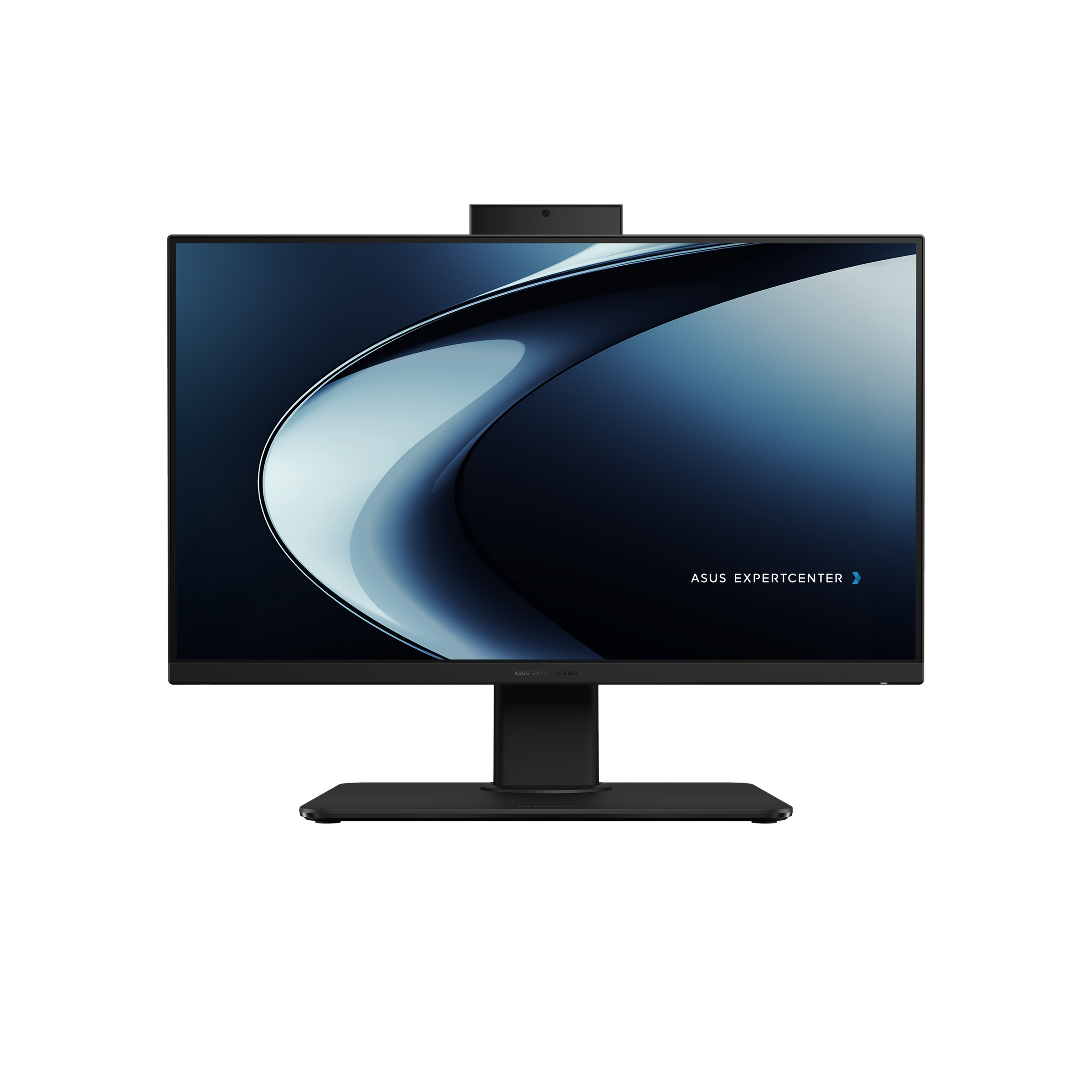
top laptop for college
ASUS Expertcenter AiO P440
| CPU | Up to Intel Core i7-13700 |
| Graphics | Integrated Intel UHD Graphics or Iris Xe |
| Display | 23.8″ Full HD (1920 x 1080) Anti-Glare IPS |
| RAM | Up to 64GB DDR4 |
| Storage | Dual storage: Up to 1TB SSD + 1TB HDD |
| Webcam | 720p HD with privacy shutter |
| Ports | USB-A, USB-C, HDMI-out, COM port, LAN, audio jack |
| Security | TPM 2.0, Kensington Lock, BIOS-level protection |
| Connectivity | Wi-Fi 6, Bluetooth 5.2 |
| Audio | ASUS AI Noise-Canceling Mic and Dual Speakers |
| Operating System | Windows 11 Pro or Home |
| Build Features | Tool-less back cover, ergonomic stand, VESA compatible |
The ExpertCenter AIO P440 makes the list because it’s one of the more pragmatic, business-first all-in-ones designed with IT flexibility and daily productivity in mind. ASUS focused on reliability and modular accessibility here—you’re getting 13th Gen Intel Core CPUs, support for dual storage (SSD + HDD), and enterprise-friendly I/O including a serial port and optional TPM 2.0. The anti-glare Full HD display with narrow bezels is ideal for extended office use, while the integrated privacy shutter, physical mute key, and ergonomic tilt options add to its everyday usability. It’s not trying to be flashy, but it executes core productivity and fleet deployment needs better than many AIOs in its class. If you want a no-fuss, upgradeable AIO that covers essential workloads without added overhead, the P440 delivers.
| Pros | Cons |
|---|---|
| Business-focused design with legacy and modern ports | Full HD resolution only (no QHD/4K option) |
| Dual storage configuration for flexibility | Integrated graphics limit creative workloads |
| Tool-less design simplifies upgrades and maintenance | |
| Ergonomic display tilt and clean cable management | |
| TPM and BIOS protection features for secure deployment |
The ExpertCenter P440 is ideal for business users, system integrators, or IT teams looking for a fleet-ready AIO that prioritizes uptime and practicality. It’s particularly well-suited for offices that need a mix of legacy connectivity—like COM ports—and modern I/O for external monitors and peripherals. If your workload involves document processing, CRM systems, remote access tools, or light multitasking, this system performs consistently without thermal throttling or fan noise issues. Its modular build also makes it a great choice for organizations that plan to upgrade RAM or storage down the line without replacing the entire unit. It’s built for environments where reliability, simplicity, and security are more important than raw horsepower.
get it now
Best Budget-friendly All-in-One Pc
Acer Aspire C24 i5 AiO PC
| CPU | Intel Core i5-1335U |
| Graphics | Intel Iris Xe Graphics |
| Display | 23.8″ Full HD (1920 x 1080) IPS, ultra-slim bezel |
| RAM | 8GB DDR4 (upgradeable up to 32GB) |
| Storage | 512GB NVMe SSD |
| Webcam | 720p HD with physical privacy shutter |
| Ports | USB 3.2, USB 2.0, HDMI-out, Ethernet, headphone jack |
| Connectivity | Wi-Fi 6, Bluetooth 5.1 |
| Audio | Stereo speakers with DTS Audio |
| Operating System | Windows 11 Home |
| Build Features | VESA mountable, adjustable tilt, integrated cable tidy |
The Acer Aspire C24 makes the list for being a solid mid-tier AIO that nails the essentials for home offices, casual productivity, and light multitasking—all in a clean, compact form. With 13th Gen Intel Core i5 processors and Intel Iris Xe graphics, it offers enough power to handle office suites, streaming, and web-based workloads without breaking a sweat. Acer also gets points for design: the ultra-thin bezels, 1080p display, and minimalist stand make this system look more premium than its price tag suggests. While it’s not geared toward creatives or heavy multitaskers, it strikes an ideal balance of value and performance for general users who want an all-in-one that just works—with minimal setup and a small desktop footprint.
| Pros | Cons |
|---|---|
| Sleek, minimal design with a slim-bezel display | Limited upgradability beyond RAM |
| Fast NVMe SSD and Wi-Fi 6 support | No discrete GPU or high-performance configs |
| Quiet operation with efficient thermal management | |
| Built-in webcam with privacy shutter | |
| Affordable for an Intel Core i5 AIO |
The Aspire C24 is best suited for home users, students, and small office workers who want a no-fuss desktop experience that looks clean and performs reliably. It’s ideal for tasks like browsing, word processing, attending virtual meetings, or running cloud-based apps—especially when you want everything in one device without messy cables or tower setups. Its slim footprint and VESA compatibility also make it a great fit for tight spaces like bedroom desks or compact workstations. If you need solid day-to-day performance from a modern Core i5 without paying for features you won’t use, this AIO hits a sweet spot for casual computing and remote work essentials.
get it now
Best Business-Grade AIO
Dell OptiPlex All-in-One Plus
| CPU | Up to Intel Core i7-13700 |
| Graphics | Intel UHD / Optional NVIDIA GeForce MX550 |
| Display | 23.8″ Full HD (1920 x 1080) Anti-Glare, Optional Touch |
| RAM | Up to 64GB DDR5 |
| Storage | Up to 2TB PCIe NVMe SSD + Optional 2.5” SATA |
| Webcam | Pop-up 5MP IR Camera (Windows Hello + Privacy Shutter) |
| Ports | USB-C, USB-A, HDMI, DisplayPort, RJ45, Audio Combo Jack |
| Connectivity | Wi-Fi 6E, Bluetooth 5.3 |
| Security | TPM 2.0, Smart Card Reader, Optional Fingerprint Reader |
| Audio | Dual integrated stereo speakers with MaxxAudio |
| Build Features | Tool-less chassis, cable management, VESA mountable |
The Dell OptiPlex All-in-One Plus earns its place for combining enterprise-grade flexibility with modern design and hardware. This isn’t your average office AIO—it’s engineered for long-term deployment, remote manageability, and front-line productivity. With 13th Gen Intel Core i5 or i7 processors, integrated or optional discrete graphics, and features like Dell Optimizer and ExpressSign-In, it brings both performance and smart workflow enhancements to the table. The 23.8″ FHD or optional 5MP IR webcam adds flexibility for video calls and facial recognition logins, while the clean cable routing and tool-less access make it easy to manage at scale. For IT-managed environments, few all-in-ones are as ready for modern work as this one.
| Pros | Cons |
|---|---|
| Robust enterprise features and security options | Not aimed at creative or GPU-heavy workloads |
| DDR5 memory and dual-storage support | Base models come with integrated graphics |
| Clean, compact design with tool-less access | |
| Optional touchscreen and Windows Hello IR webcam | |
| Built-in Dell Optimizer enhances daily performance | Slightly heavier than some AIO competitors |
The OptiPlex All-in-One Plus is ideal for professionals, institutions, and IT departments seeking a reliable desktop solution with strong security, modern management tools, and enterprise-level scalability. Whether you’re managing remote staff, equipping front-office teams, or setting up in client-facing spaces, this AIO balances performance and polish. It handles multitasking, video conferencing, and secure logins effortlessly, while its modular access and expansion options make future upgrades less of a hassle. For organizations running standardized fleets or professionals who need reliable uptime with clean aesthetics, this AIO is as versatile as it is practical.
get it now
Best Premium AIO
Apple iMac M3 (2023)
| CPU | Apple M3 (8-core CPU) |
| GPU | Up to 10-core integrated GPU |
| Display | 24″ Retina 4.5K (4480 x 2520) P3 wide color, True Tone |
| RAM | 8GB or 16GB unified memory |
| Storage | 256GB to 1TB SSD |
| Webcam | 1080p FaceTime HD camera |
| Ports | 2x Thunderbolt 4, Optional: 2x USB 3.0, Gigabit Ethernet |
| Connectivity | Wi-Fi 6E, Bluetooth 5.3 |
| Audio | Six-speaker system, Spatial Audio, Studio-quality mics |
| Security | Secure Enclave, Touch ID (with Magic Keyboard) |
| Build Features | Ultra-slim aluminum chassis, silent cooling, fanless |
The M3 iMac earns its spot by doing what Apple does best—streamlining powerful hardware into a silent, ultra-thin form factor with near-effortless performance. Now powered by Apple’s M3 chip, this iMac delivers a surprising amount of speed and responsiveness for creative workflows, productivity, and general computing, all while staying fanless and whisper-quiet. Its 24-inch 4.5K Retina display remains one of the sharpest in its class, making it ideal for users who prioritize visual fidelity. While you’re locked into the Apple ecosystem and expandability is limited, the payoff is in a unified system where hardware and software are tuned to work seamlessly. Whether you’re editing video, designing in Figma, or juggling a dozen Safari tabs, the M3 iMac handles it without breaking a sweat.
| Pros | Cons |
|---|---|
| M3 chip offers fast, silent performance | Non-upgradable RAM or storage |
| Brilliant 4.5K Retina display with P3 wide color | Limited port selection on base models |
| Seamless macOS integration and ecosystem synergy | No touch support |
| Clean, ultra-minimalist build with color options | |
| Excellent webcam, mic, and speaker setup |
The M3 iMac is best for users who live in the Apple ecosystem or need a visually precise, performance-efficient desktop that just works out of the box. Ideal for creative professionals, remote workers, and digital multitaskers, it excels at design, content creation, light editing, and productivity software. If you rely on tools like Final Cut Pro, Affinity Designer, or even browser-based workflows with tight integration across iPhone and iPad, the M3 iMac fits seamlessly into your setup. It’s also a go-to pick for anyone who wants minimal desk clutter with zero compromise on display quality and day-to-day responsiveness.
get it now
What to Look for in an All-in-One PC
All-in-one PCs have a clean, modern appeal—they save space, cut down on cables, and blend right into your desk setup. But after using a few of them over the years, we’ve learned that design isn’t everything. If you’re buying an AIO for your home office, light creative work, or general productivity, here’s what really matters—based on what we’ve actually experienced.
Processor
We’ve noticed that many AIOs try to stay slim by using mobile-class processors. That’s fine for lightweight tasks, but if you’re juggling a few browser tabs, running Zoom, and editing a doc all at once, those low-power chips can get sluggish fast. For everyday comfort, we recommend starting with an Intel Core i5 or AMD Ryzen 5. If you’re planning to use heavier creative software like Photoshop or light video editing, an i7 or Ryzen 7 gives a noticeable lift. Apple’s M3-based iMacs are also very efficient for this kind of work. In our experience, once you dip below that mid-range tier, the slowdown is obvious—especially after a few months of use.
Graphics
Most AIOs skip discrete graphics to keep the design slim and thermals in check. And honestly? For 90% of what people use AIOs for—browsing, docs, media, casual design work—integrated graphics get the job done. We’ve used machines with Intel Iris Xe and Apple’s unified GPU, and both handled light creative tasks and 4K video playback without issues. That said, if you do serious photo/video work or want a bit of gaming power, look for models with an entry-level dedicated GPU (like the NVIDIA MX or entry RTX series). Just know they’re rare and often drive the price way up.
RAM
When we used AIOs with 8GB of RAM, things worked—until we opened too many tabs, launched Spotify, and tried running updates at the same time. That’s when the slowdown hits. We’ve found 16GB to be the real sweet spot for smooth, everyday use. It lets you multitask without stutter and gives room for light content creation or photo editing. Some budget AIOs offer upgradeable RAM, but many don’t—so it’s worth getting enough from the start.
Storage
AIOs that rely on spinning hard drives feel dated fast. We’ve tested both, and trust us—booting up or launching apps on an SSD feels miles quicker. A 512GB SSD hits the sweet spot between fast performance and enough space for everyday files and programs. If you need more space for photos or video files, look for a model with a second HDD or consider external storage. Just avoid HDD-only models unless you’re okay with a slower experience.
Display
One of the biggest pros—and cons—of an AIO is the built-in screen. You can’t upgrade it later, so we always prioritize display quality. A 24-inch Full HD panel is standard and fine for most uses, but we really appreciated the extra room on 27-inch models—it makes multitasking way easier. If you care about color accuracy for creative work or just want crisp visuals, go for a QHD or even 4K panel. IPS displays are essential if you want wide viewing angles and rich, accurate colors. 4o Some touchscreens are handy, but not essential unless you’re in a hands-on workflow.
Port
We’ve run into too many AIOs that look sleek but lack the ports we actually need. At minimum, make sure you’re getting a couple of USB-A ports, USB-C, and ideally an HDMI (in or out). An SD card reader and Ethernet jack are useful bonuses, especially for photo work or stable internet. Wireless-wise, Wi-Fi 6 and Bluetooth 5.0+ are now standard—and worth checking for futureproofing.
Webcam & Audio
Since many of us use AIOs for Zoom calls or online classes, the webcam and microphone combo matters more than we used to think. We’ve used 720p webcams that look grainy in daylight—so aim for 1080p if you care about video quality. Front-facing speakers are a plus, but even the better ones won’t match a decent pair of external speakers. Still, a few premium AIOs do sound surprisingly rich for casual use.
Build & Ergonomics
Design isn’t just about aesthetics—it affects your posture, comfort, and daily workflow. We’ve seen AIOs with poor stands that don’t adjust enough or feel flimsy after a year. A solid, adjustable stand makes a real difference. Also, if you use monitor arms, make sure it’s VESA compatible (many aren’t). AIOs with metal or high-quality plastic bodies usually feel more durable and run cooler under load.
OS
We’ve used both Windows-based AIOs and macOS iMacs, and it really comes down to what fits your workflow. If your school or job runs on Microsoft 365 or Windows-only tools, a Windows AIO makes the most sense. If you’re in the Apple ecosystem or value a cleaner UI, macOS is a smooth experience. ChromeOS AIOs are out there, but they’re really only suitable for the most basic tasks.
AIOs aren’t about raw power—they’re about balance. You’re giving up expandability for a cleaner setup—and that trade-off works as long as you choose the right specs from the start. We’ve found the best AIO experience comes from mid-range models with solid processors, 16GB RAM, a fast SSD, and a display that won’t feel cramped. Get those right, and your AIO won’t just look good on your desk—it’ll actually make your day easier.
